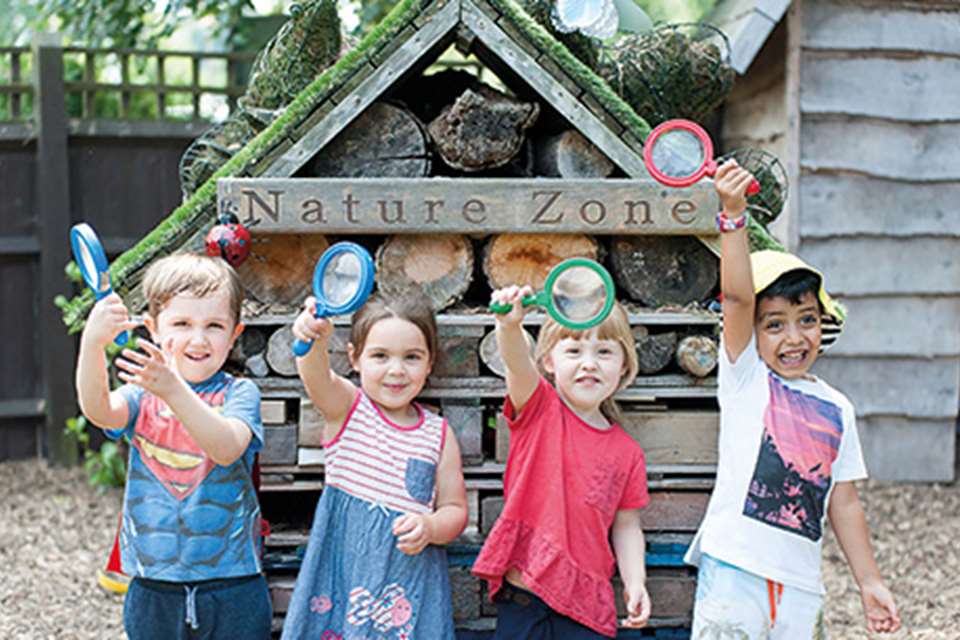You are what you buy
Laura Hoyland
Monday, February 17, 2020
How can early years settings improve the way they buy and use resources? Laura Hoyland, of Hopscotch Early Years Consultancy, has some tips

It is important to define your ethos, vision and curriculum before you buy anything. Knowing what approach you want to take in pedagogy will define the kind of purchases you make. For example, a setting following a Forest School approach is going to purchase differently from a Montessori setting.
It is important to find quality suppliers that deliver on time and offer you value for money. Shopping around is vital, especially when you can find the same pieces of equipment for vastly different prices. Shop savvy and don’t be afraid to get a deal – it’s always worth an ask.
Breakages
One question we hear a lot is ‘how do we stop children breaking things?’. Children are very good at taking care of things – if they are taught how. Role-modelling how to handle items teaches children how to respect their environment. All too often we see staff tidying up – how will children learn to put things away and take care of resources if you do it for them?
New resources could be introduced at group time, to discuss how to use and take care of them. Purchasing age-appropriate equipment is vital. More delicate items will get broken if they are given to children who do not have the ability to handle them correctly.
Raising funds for big purchases is often a headache. One of our settings we work with offers a monthly babysitting service. This is held one weekend evening and it uses the funds for purchasing new items. Parents love this service and it benefits both customers and the nursery.
Second hand and repurposing
Scrap stores are an excellent way to save money and help the environment. They often charge per trolley or basket and you can fill them with open-ended resources, such as materials, tubes and a wealth of collage materials. One scrap store I follow online had mannequins for sale: imagine all the wonderful things you could do with those. One setting bought a real car, which has allowed the children hours of fun and learning. Having real-life objects allows children to develop their creativity and knowledge of the world.
Some settings spend 75 per cent of their resources budget on repurposing and recycling items from charity shops. You just need to make sure items are risk-assessed and safe for children to use. Don’t be afraid to ask the volunteers in the shop for anything you are looking for, they often have lots of items out the back and can always call you if an item comes in.
Natural materials – sticks, large pebbles and pinecones – are free, and lots of settings are focusing on not spending money but instead foraging for items. If you look at your parents who use the setting, I could hazard a guess that many of them work in industries that would donate or help you to acquire resources. For example, vets may donate bandages to help with role play, a mechanic may be able to source some old tyres for you, while at one setting we work with, parents who work in publishing come in regularly and read stories to the children.
Waste not, want not
Try not to buy expensive items that can only be used one way, such as a climbing frame, when tree stumps, planks and tyres will give climbing options plus a lot more. Move equipment around rooms. A wooden den can be used as a cosy area to read books to babies, or as a space pod for pre-school. Avoid plastic toys. Cardboard boxes can be aeroplanes, cars, magic carpets or time machines.
Try to get as much life out of your resources as possible. If indoor furniture is becoming worn, maybe use it outside.
You can also work with other settings to get discounts for bulk items such as paper. Also, think about sharing resources with other local settings or accessing a toy library.
case study
One start-up setting we worked with put us in charge of the resources budget, which had to cover furniture as well as the resources for each room. We looked at the shape and floor space, the lighting and the wall space. This gave us an insight into how many children each room would hold and what furniture was needed. We considered which furniture would give optimum storage and daily use while giving enough space to move and explore freely.
Some of the rooms had no natural light, so we opted for pale wood and white paint. We also ensured that there was plenty of different lighting, which could be changed throughout the day just as natural light would change in a room with windows. Lamps also gave a calming environment at sleep and rest times.
We had a clear plan of the experiences we wanted children to access and held meetings with room leaders asking for their input into the resources to buy. It was important that we worked as a team and they had control within the budget to make choices that would impact their day-to-day teaching. Their commitment meant they were taking ownership and understood the budgetary constraints, which in turn meant they would look after the purchases.
We put together a clear list, and a map of each room. We made price comparisons and shopped in charity shops for real-life resources that would enhance children’s imaginative play. We focused on different materials and heuristic resources and came away with a haul of great items such as metal teapots, baskets, pot plants and a range of hats and dressing-up clothing.







